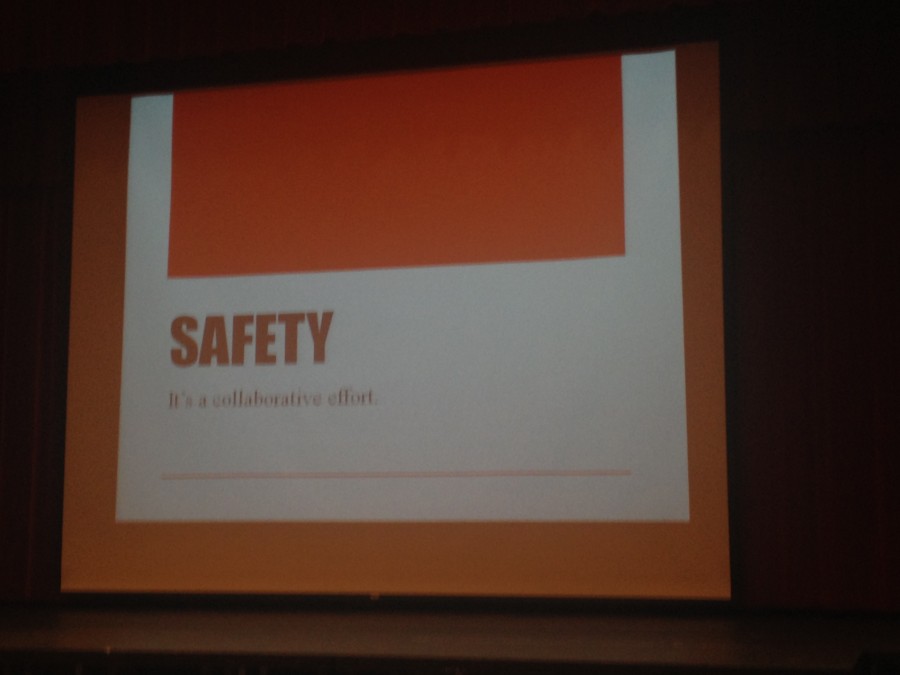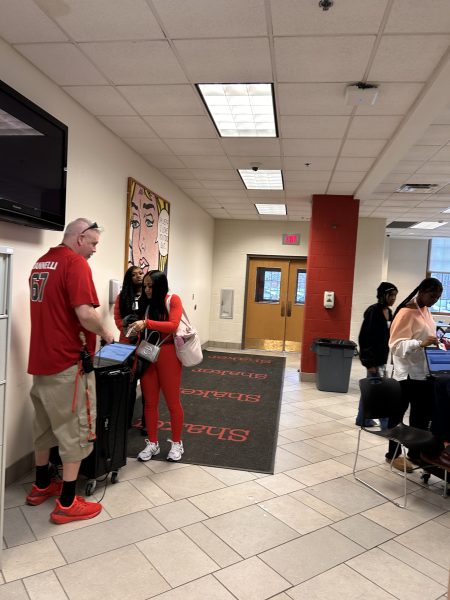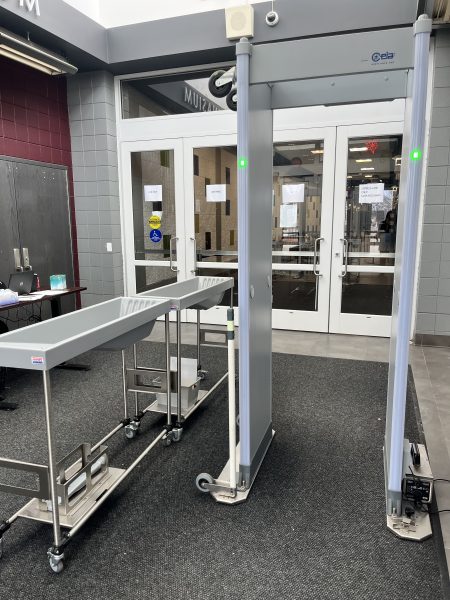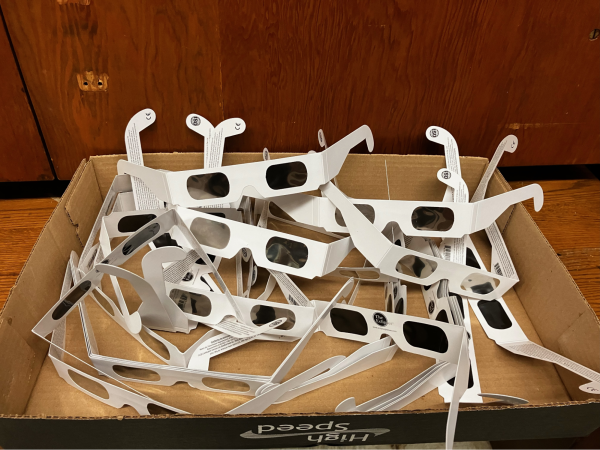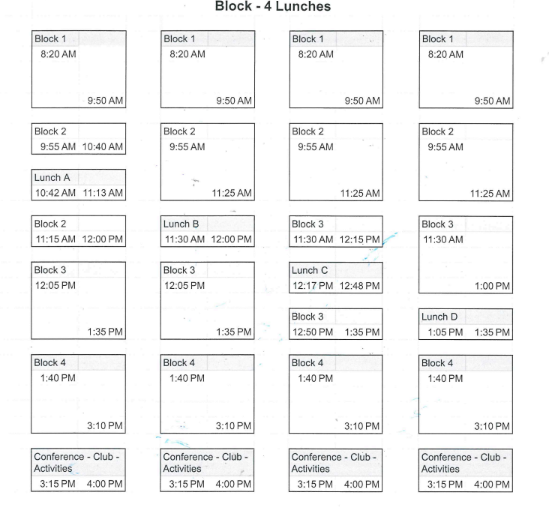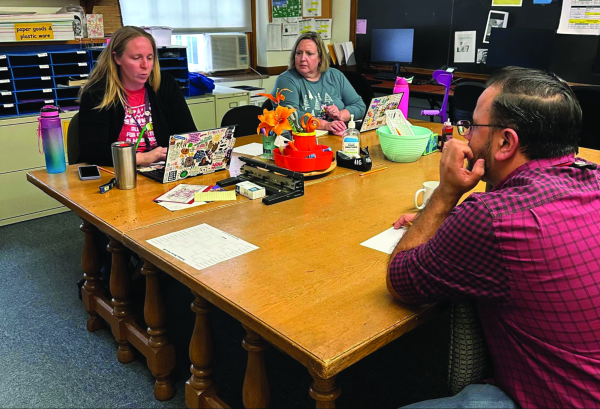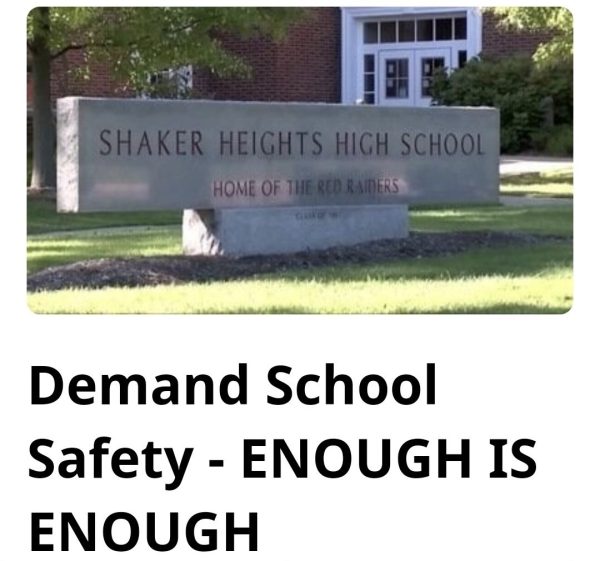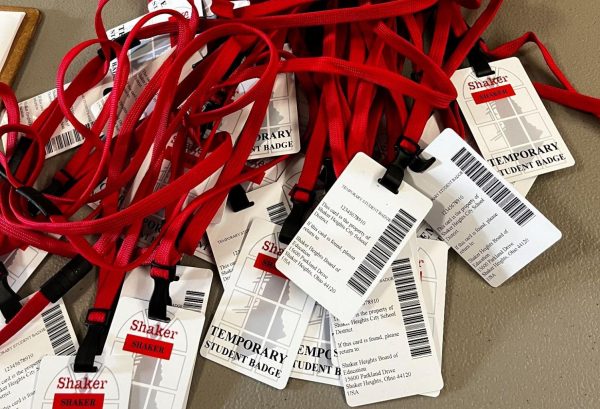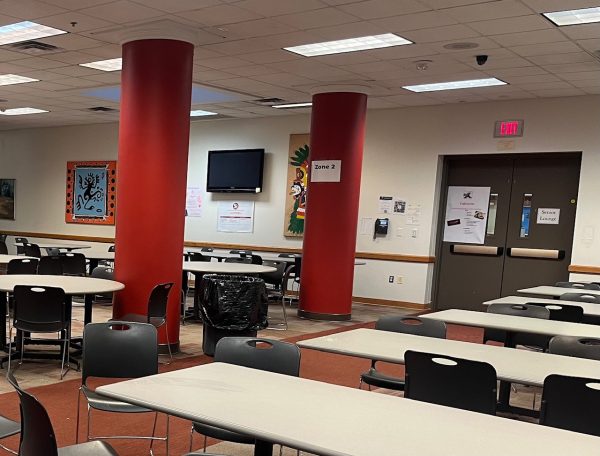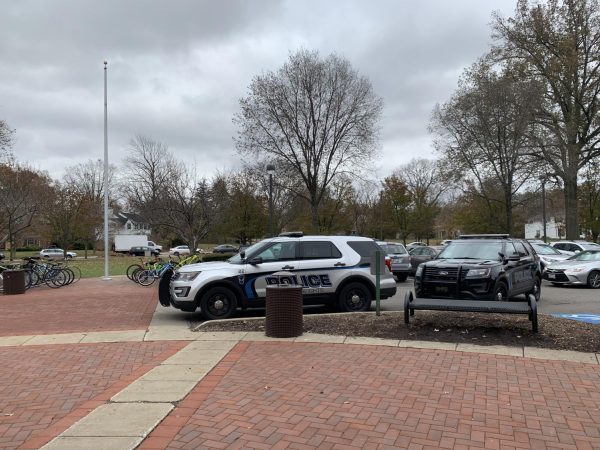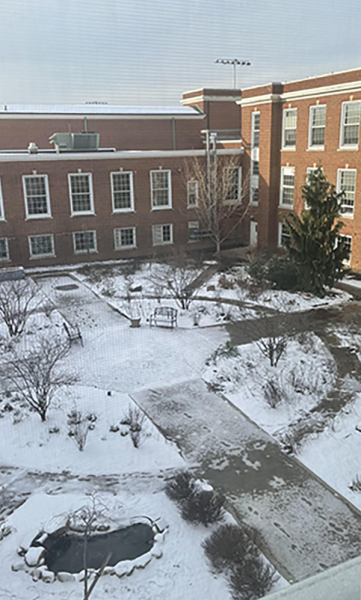Safety Assembly Leaves Students Underwhelmed
Safety assembly prompted by high school threat falls short of students’ expectations.
This safety PowerPoint played behind Principal James Reed during the assembly.
The 15-minute safety assemblies convened Oct. 28 left some students frustrated, confused and irritated.
In response to the Oct. 7 threat directed at the high school via Instagram, the district held a safety summit for community members Oct. 26 and two tenth-period assemblies for the high school student body Oct. 28.
The threat was posted at 12:12 a.m. Oct. 7 through Instagram direct messaging from an anonymous account. It is unknown who initially received the threat, but it circulated quickly among students on Instagram and Twitter. This original threat stated, “I am coming with a rifle then I will blow the b—- up.”
Police reports confirmed that Shaker Heights police were notified about a previous threat from the same account posted Oct. 6. According to Hutchings, who spoke to teachers after school Oct. 7, police determined that the Oct. 6 threat was not credible. Neither the district nor the police released information about the Oct. 6 threat to the public that day.
Before the assembly, students were not sure what to expect.
“I think the assembly will set a precedent about how we have to deal with certain security issues,” sophomore Emma Neil said.
Science teacher John O’Verko also believed the assembly would touch on security measures when there are crises in the school.
“Students are curious about the procedures when there is a threat,” O’Verko said. “When you’re on the other side, you never know what’s going on, but administration is going through specific channels to maintain safety for the students.”
He said he thought the assembly would give students a “behind the scenes” look at Shaker’s safety procedures.
Although there was an expectation that the assembly would address the Oct. 7 threat and give students information about what to do in similar situations, the actual messages delivered were more broad.
Principal James Reed III started the assembly by explaining that he would briefly highlight a few key points.
He outlined the role that each individual plays in times of crisis.
“We continue to try and tighten up procedures and understand that the safety of every person in this school,” he said, “it does not rest just with the administration, it does not rest with simply the students, it rests with all of us. All of us together keep each other safe, and all of us have a responsibility in that.”
Reed’s words did not resonate with sophomore Anna Walker.
“Reed said a lot of fluff that didn’t mean anything,” she said. “I think so much has happened, they just wanted to calm us down.”
In a two-minute video titled “Say Something,” students were instructed to report suspicious behavior. The video ended with a child texting a parent to inform them of a threat.
Some, however, questioned the value of the film.
“I don’t think the students were engaged, and I don’t think it will make a difference,” sophomore Andrew Fry said.
During the film, some students laughed at images and video clips of students under attack.
Despite the encouragement for students to report odd behavior and “keep each other safe,” as Reed put it, students expressed confusion after the assembly about whether social media threats should be taken seriously.
In an interview after Oct. 29, Reed clarified that threats should be taken seriously and reported to administration.
“There was a serious threat,” he said. “If you get those, you need to come to an adult rather than [tweeting] and and going to 1,500 more people.”
During the assembly, Reed said that in the midst of of the Oct. 7 threat, administration found out that 60 percent of students’ home phone numbers do not work. He told students to visit their guidance counselors to update their phone numbers.
After the video, students were instructed on proper procedures for fire, lockdown and tornado drills in addition to revisiting Shaker’s technology policies.
Assistant Principal Ramsey Inman touched on the dangers of technology.
“As we have seen,” he said, referring to the threat, “tweets or texts can excite the community and put it in an uproar … We hold a responsibility not to scare others in the community.”
He encouraged students to tell peers who may be entertaining the idea of making threats that they can face legal consequences.
The review of procedures for fire, lockdown and tornado drills frustrated students.
“Honestly, all I got was a bunch of force-fed reassurance,” sophomore Andrew Frye said. “There wasn’t any new information, and I see this as damage control.”
“The assembly was not beneficial because students already had all of this information, and the administration was just reiterating the obvious,” sophomore David Mack said. “When there’s a fire drill, I’m obviously not going to stay sitting on my phone.”
Students also noted the assembly repeated information delivered at the Aug. 26-27 back-to-school assembly and at middle school assemblies.
“I think the assembly was really redundant,” freshman Wyatt Sweeney said, referring to the messages given at the beginning of the year and assemblies held at the middle school. “By my count we’ve had about 10 of these in the past two years. It seems kind of dumb that you have to keep reinforcing the point by bringing everyone in and telling the masses what to do. Evidently that isn’t working because there is the continued need of bringing in the masses to tell them what to do.”
Sweeney suggested an alternative.
“You should find another way to communicate,” he said. “We’ve got smart students at Shaker. It wouldn’t be difficult to sit some people down and say, ‘This isn’t working. What are we going to do? Let’s formulate a plan.’ We love plans at Shaker.”
Print Editor In Chief Ella Shlonsky, Raider Zone Editor Alexa Jankowsky, Lifestyle Editor Zachary Nosanchuk and Journalism I Reporters Astrid Braun and Nicholas Lorenzo contributed reporting.

